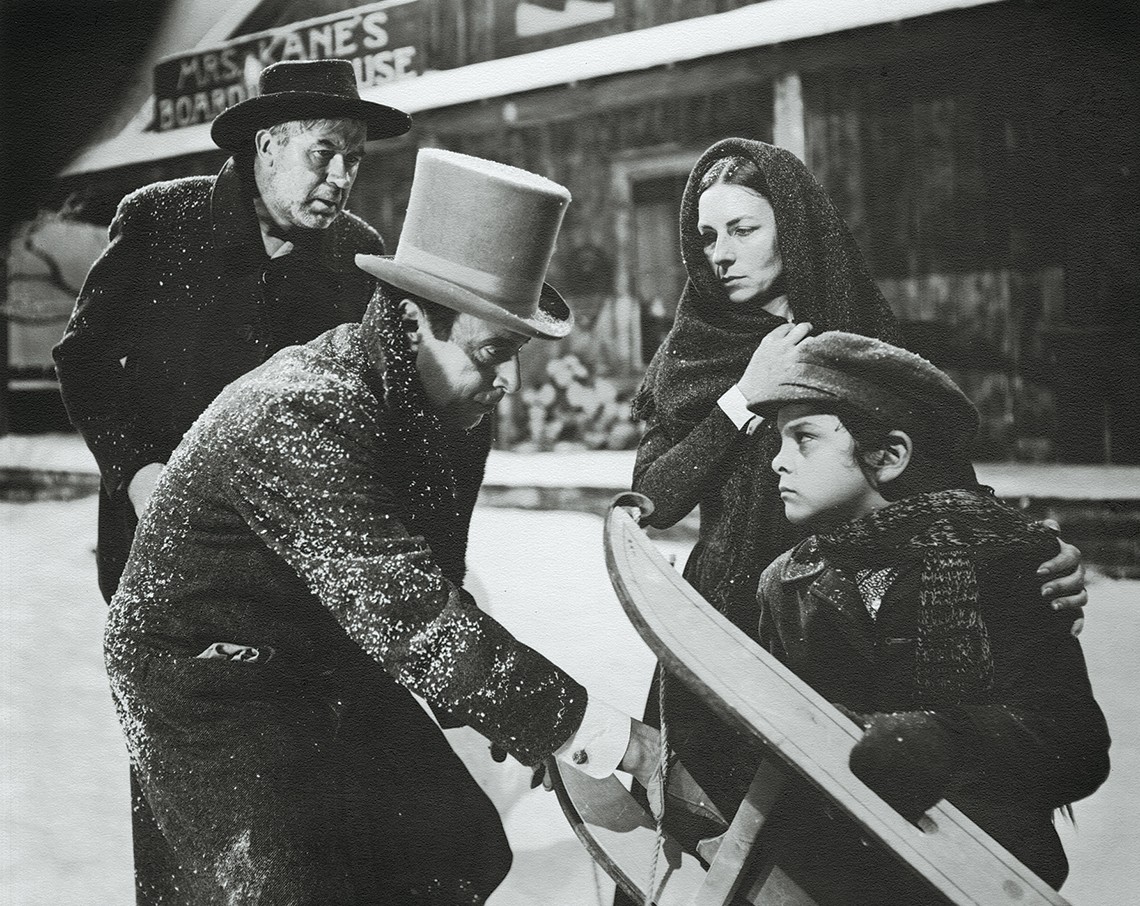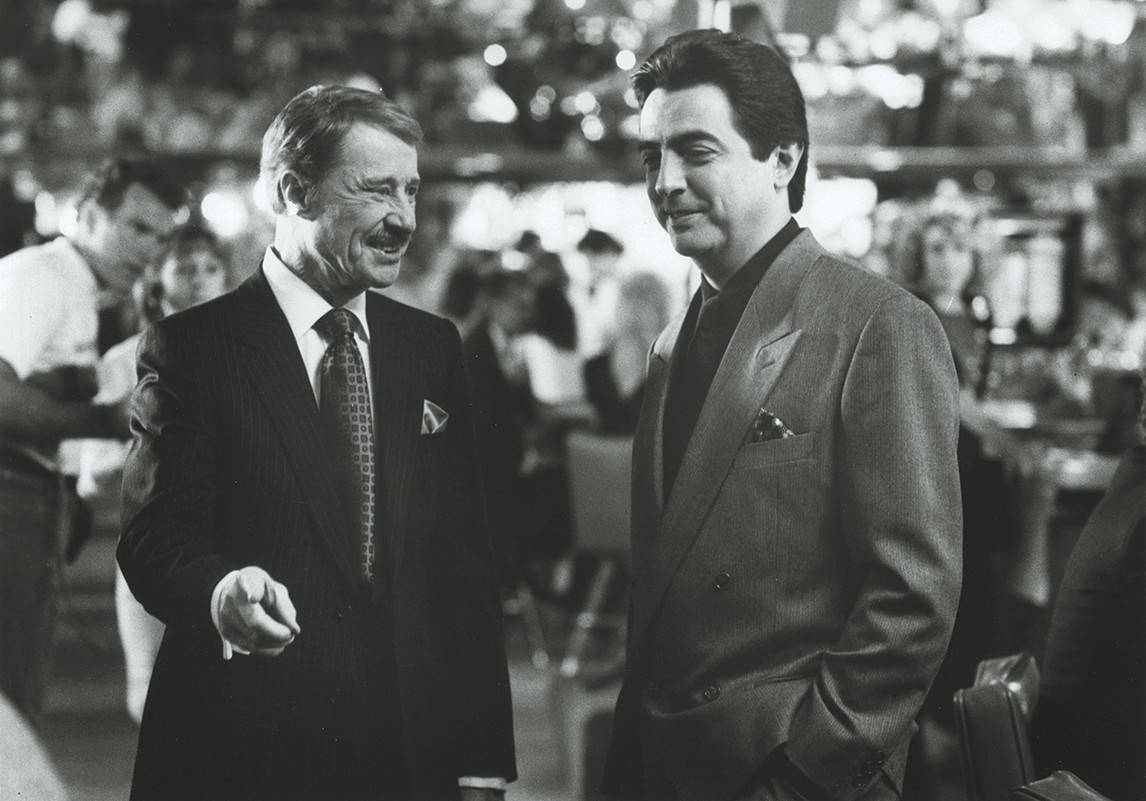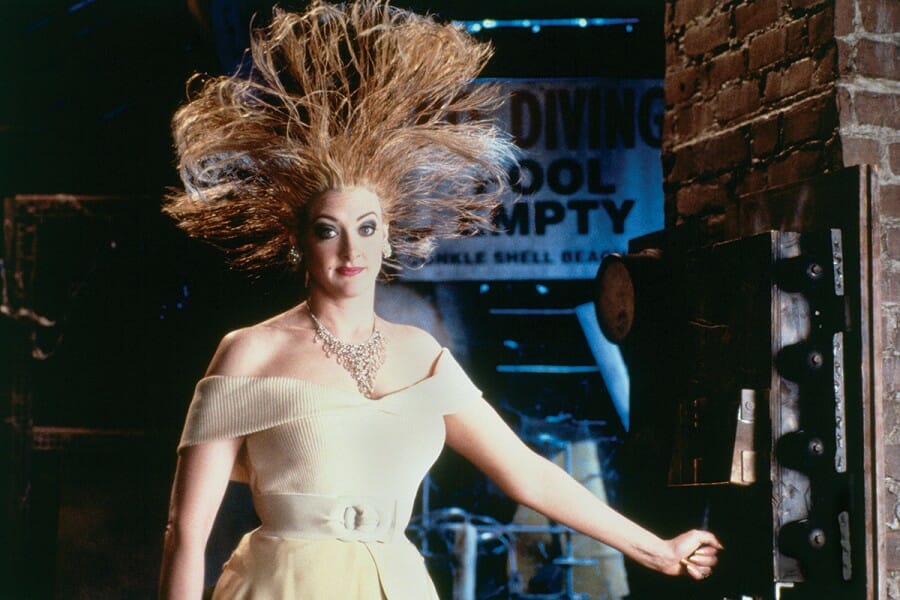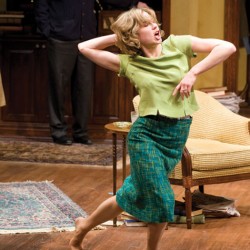There are many ways to choose the best American movie performances. If you’re looking at comedians, you might pick Eddie Murphy, Cary Grant, or Katharine Hepburn. If you’re looking at dramatic actors, you might pick Meryl Streep, Marlon Brando, or (yes, again) Hepburn. But what about the best UW alumni performances?
Looking at movie history from that angle yields an impressive list of films, from the early sound era to the present. UW actors have starred in cinematic classics and collected Academy Awards, although statuettes don’t necessarily indicate their finest work. As we all know, the Oscars can pick the wrong winners or overlook greatness entirely.
So what do you say we judge greatness for ourselves? After a monthlong binge on alumni films, I hereby offer my own awards for the best Badger performances of all time, including one that’s only 10 seconds long.
Fredric March 1920 in A Star Is Born (1937)

Fredric March (with Janet Gaynor) can still make you laugh and cry in A Star Is Born — not bad for an otherwise dated melodrama. Courtesy of the Wisconsin Center for Film and Theater Research
Fredric March is UW–Madison’s biggest movie star, winning Oscars for Dr. Jekyll and Mr. Hyde and The Best Years of Our Lives. He came up empty-handed for A Star Is Born, but his performance as Norman Maine stands the test of time better than his more celebrated roles. It can still make you laugh and cry — not bad for an otherwise dated melodrama.
Norman is a matinee idol on the skids. The soulless Hollywood studio system has turned him into a scotch-guzzling buffoon — though, as March plays him, an unusually charming one. He gets you rooting for his relationship with Esther Blodgett (Janet Gaynor), an aspiring actress so angelic that she melts his hardened heart. Along with making love, Norman and Esther make jokes, and surprisingly good ones for a couple careening toward tragedy. March had the perfect touch for such repartee in the golden age of screwball comedy.
The actor was renowned for his versatility, and he flaunts it in A Star Is Born. Norman is comic, tragic, and everything in between: from cynical to vulnerable, bumbling to debonair. When he wades into the Pacific Ocean for the ultimate self-sacrifice, you hate to see him go.
Meinhardt Raabe ’37 in The Wizard of Oz (1939)

In The Wizard of Oz, Meinhardt Raabe (third from left) makes an unforgettable impression in a mere 10 seconds on-screen. Courtesy of the Wisconsin Center for Film and Theater Research
No one would describe The Wizard of Oz as “a Meinhardt Raabe picture.” But as the coroner of Munchkinland, Raabe makes an unforgettable impression in just a few seconds on-screen.
Raabe’s scene represents a turning point in Dorothy Gale’s Technicolor journey of self-discovery. Her flying Kansas farmhouse has flattened the Wicked Witch of the East, and she’ll earn heroic status if the Munchkins can confirm the villain’s death. Did you ever notice that The Wizard of Oz, though illogical in the extreme, is obsessed with standards of proof? Dorothy requires a broom to prove the other witch’s defeat. Her fellow outcasts need trinkets to prove they have brains, heart, and courage.
In Munchkinland, proof falls to Raabe’s character. Fitted out in a pointy beard and purple scrolled hat, he could have been simply ridiculous. But Raabe lends the character a stately presence as he displays the all-important death certificate, mouthing a line as famous as any by Humphrey Bogart: “She’s not only merely dead, she’s really most sin-cere-ly dead!”
With that one moment of glory, the game UW actor secured himself a place in movie history.
Agnes Moorehead in Citizen Kane (1941)

Agnes Moorehead anchors a heartbreaking scene in Citizen Kane. Courtesy of the Wisconsin Center for Film and Theater Research
Snow falls outside a modest boarding house. Young Charles Foster Kane stands by his Rosebud sled, throwing a snowball. The camera pulls back until an imposing figure enters the frame: Charles’s mother, Mary (Agnes Moorehead), who tenderly calls to him out the window.
Moorehead anchors a heartbreaking scene in perhaps the greatest movie of all time. Mary has come into money, and she believes that sending Charles away from home is in his best interest. We see from her son’s tears — in a wrenching closeup — that she is mistaken. It’s a wound that will never heal, even as Charles grows up to be a renowned newspaper tycoon. Is it any wonder his dying word is “Rosebud”?
Writer-director-star Orson Welles suffered a similar trauma in his own childhood, so you can bet he thought long and hard about whom to cast as the wonderful, terrible mother. In her brief time on-screen, Moorehead conveys Mary’s mixed emotions with a gulp, a sigh, and an almost imperceptible quiver in her voice. The portrayal is all the more moving for the actor’s restraint.
Moorehead lived for a time in Wisconsin and loved the UW, donating her papers to the university. She led people to think she had a UW degree but actually attended only one session of summer school. For the purposes of this article, though, let’s go ahead and call her a Badger.
That allows for a magnificent boast: UW–Madison has a claim on Citizen Kane.
Gena Rowlands x’51 in A Woman under the Influence (1974)
We meet Mabel (Gena Rowlands) in motion. Preparing for a date with her husband (Peter Falk), she packs off the kids, paces from room to room, smokes, sings, whistles, mutters. Director John Cassavetes’s tracking camera can barely keep up with her — until date night falls apart and an ominous stillness sets in.
In A Woman under the Influence, Mabel veers between manic and depressive, struggling to live up to the conventional roles of wife and mother. The movie is a monument of independent cinema, and Rowlands delivers one of the great Oscar-nominated mad acts of the 1970s — right up there with Peter Finch in Network and Robert De Niro in Taxi Driver. Even Mabel’s loyal spouse is forced to admit, “I don’t understand what she’s doing.”
Viewers don’t understand what she’s doing, either. It’s like trying to make sense of Ophelia’s Act IV raving in Hamlet. Nevertheless, you can’t take your eyes off Mabel as she baffles family and neighbors. The intensity in her expression — teeth bared, nostrils flaring — speaks volumes about her troubled marriage.
Cassavetes treasured improvisation, and Rowlands (his real-life wife) is nothing if not spontaneous. You never know what her character will do next. Even in a movie with virtually no plot, she keeps you on the edge of your seat.
Don Ameche x’31 in Things Change (1988)

Don Ameche (left, with Joe Mantegna) may not say much in Things Change, but his silence is golden. Courtesy of the Wisconsin Center for Film and Theater Research
Don Ameche was a glamorous movie star in the 1930s and ’40s, followed by a long dry spell. He made a comeback in the ’80s with Cocoon, winning an Oscar for Best Supporting Actor. But his outstanding late-career achievement came in Things Change, an existential buddy movie by playwright David Mamet and children’s author Shel Silverstein. Ameche stars as shoeshine man Gino, who reluctantly agrees to take the fall for a gangland murder. Before the trial, the mobster (Joe Mantegna) assigned to keep an eye on Gino bends the rules by letting him enjoy a last weekend of freedom in Lake Tahoe. Then, as the title has it, things change.
At 80, Ameche retains his dapper mustache and leading-man stature. He gives Gino a regal bearing in spite of his humble station in life. You have no trouble believing that this simple laborer could be mistaken for a Mafia kingpin in Tahoe — a plot point that might have strained credulity but for Ameche’s subtle performance.
The actor works his magic with minimal dialogue. As fortune has its way with Gino, he responds with little more than a widening of the eyes or a furrowing of the brow. Ameche may not say much in Things Change, but his silence is golden.
Joan Cusack ’84 in Addams Family Values (1993)
Joan Cusack received Oscar nominations for second-banana parts in Working Girl and In & Out, but her shining moment came in a movie she dominates. Though Addams Family Values is packed with comic scene-stealers (Anjelica Huston as Morticia, Raul Julia as Gomez, Christopher Lloyd as Uncle Fester), Cusack outdoes them all as a gold digger from hell. Imagine Marilyn Monroe from Gentlemen Prefer Blondes crossed with Cruella de Vil.
Hired as a nanny, Cusack’s Debbie drops like a (blonde) bombshell into the topsy-turvy Addams household. In this gothic netherworld, inspired by Charles Addams’s New Yorker cartoons, gloomy is good and beautiful is bad. Even among the extravagantly wicked family members, however, Debbie stands out for her perversity. She sets her sights on Uncle Fester, who, while repulsive (“Fester means rot,” he helpfully explains), is also rich. Cusack puts everything she has into the devilish one-liners, playing against type as Fester’s femme fatale.
The best word for her performance might be “dreadful.” In the Addams universe, that’s the highest compliment.
Carrie Coon MFA’06 in Gone Girl (2014)
Margo (Carrie Coon) and Nick (Ben Affleck) are sarcastic twins with a taste for board games. Game-playing of a deadlier sort sets Gone Girl in motion, beginning when Nick’s wife (Rosamund Pike) goes missing under mysterious circumstances.
This potboiler is a psychological mess. Affleck and Pike can’t make sense of their characters’ relationship, which wobbles between love and hate to satisfy the demands of an improbable cat-and-mouse story. The one actor who emerges with dignity intact is Coon, who draws on her UW theatrical training to create a consistent character.
Margo is written as a mere contrivance, arriving on cue to deliver or react to new information. But Coon brings so much more to the role. In a movie where neither of the main characters warrants our sympathy, she’s the stalwart sister anybody would want during a murder investigation/media circus/con game. She takes the character beyond sarcasm to authentic desperation and despair. Remarkably, she even makes an emotional connection with Affleck — no mean feat given his determination to smirk through every plot twist.
Coon has distinguished herself on stage and television while earning relatively small parts in movies. Gone Girl suggests that this talented Badger is ready for her star turn.
Dean Robbins is an Orson Welles fanatic (as if you couldn’t tell) and coeditor of On Wisconsin. See here for an update on Fredric March’s campus controversy.
Published in the Spring 2020 issue





Comments
No comments posted yet.